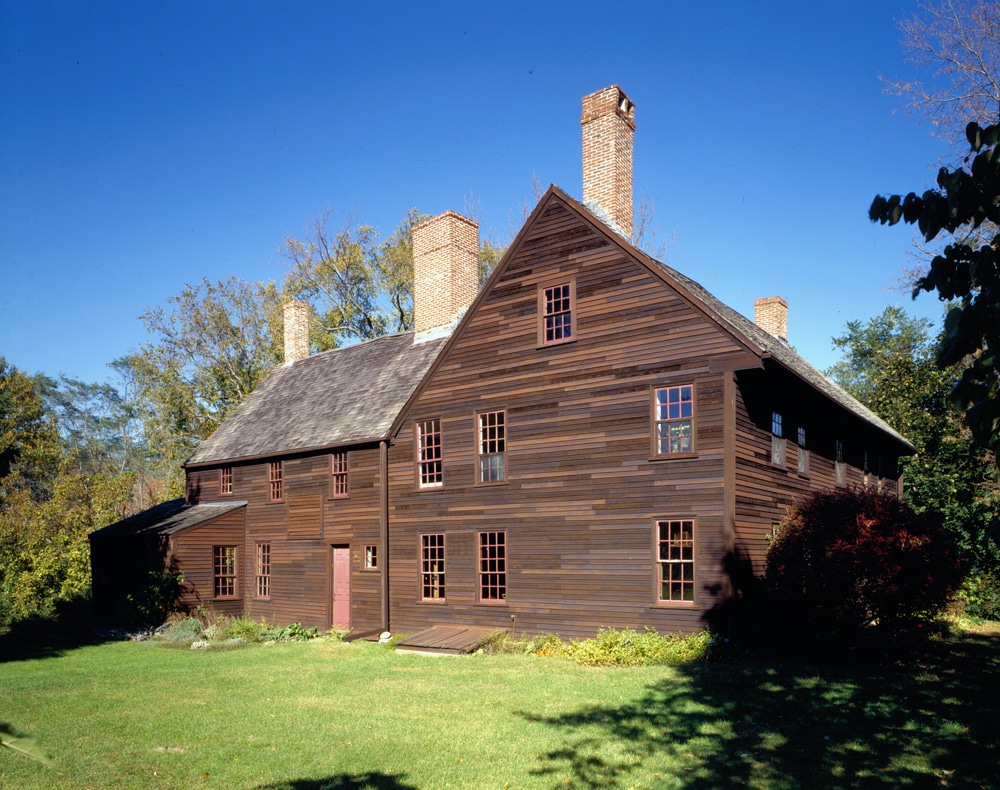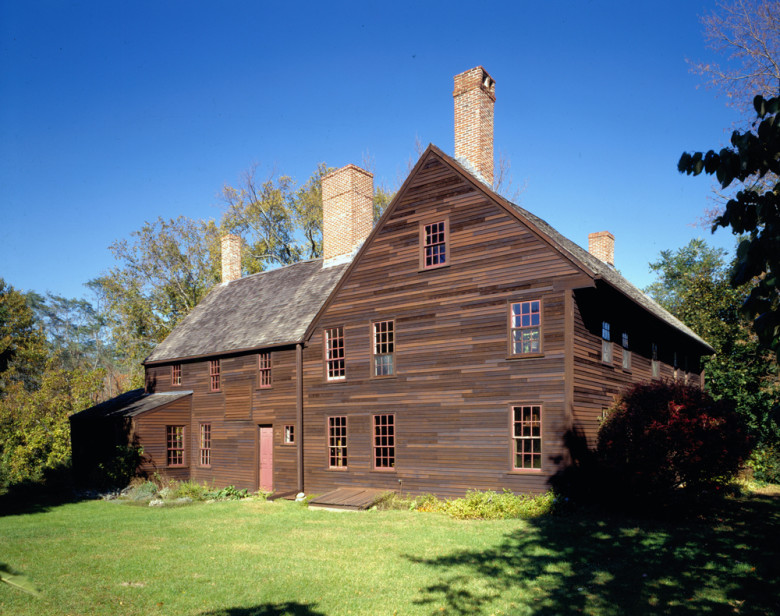Expert Home Advice | December 2016
Expert home advice from Historic New England, the largest heritage organization in the country.


Why are the clapboards on many old New England houses closer together on the bottom of the house but wider apart at the top of the house?
Mary B., Springfield, MA
There are a couple of theories about why we find evidence for spacing clapboards at the bottom of 17th- and 18th-century New England houses closer together than those at the top. One explanation is that the gradually widening exposure of the clapboards toward the eaves at the top of the house was done for aesthetic purposes to make the house look taller. It is much more likely that the practice of attaching clapboards closer together at the ground level provided a sturdier defense of the building’s exterior against severe weathering. The lower level of the structure is closer to the ground and typically more susceptible to rainwater splash back in a house without gutters. In addition, houses often suffer damage from snow and groundwater penetration around the foundation, which on an early house is quite low to the ground, as well as from plants and vegetation growing up around the structure. Having a thicker covering of clapboards at this level gave an extra layer of protection against these threats.
Sally Zimmerman, Senior Preservation Services Manager
***
How do I identify old nails?
Margo T., North Conway, NH
The chronology of American nail manufacture is an informative tool that can aid in dating old structures. Nails were generally forged prior to 1800. They were created by hammering a heated iron rod to form a point at one end. The other end was broken from the rod and the nail was placed into a hole to hammer the broken end into a head. As a result of this process, hand-wrought nails are identifiable by their hammered appearance and different nail heads.
Mass production of nails began in America in the 1790s with the manufacture of early machine-cut nails. Cut nails were created by shearing the nails off of a rolled iron plate. Advances in production technology make it possible to differentiate between early machine-cut nails and later ones. Cut nails generally had wrought heads until the 1820s when mechanized systems were developed for this process.
Cut nails continued to be widely used until the turn of the 20th century. Due to advances in steel production, the manufacture of modern wire nails began in the 1880s and predominated by the late 1890s when round-head nails started to be produced. While dating nails won’t provide an exact date of construction, it works in tandem with other methods to determine periods of construction for buildings, additions, and renovations.
A fairly comprehensive chronology and manual for the identification of nails is Lee H. Nelson’s 1962 Nail Chronology as an Aid to Dating Old Buildings.
Dylan Peacock, Preservation Services Manager
***
While repairing a wall in our Federal period house, a worker discovered two intact newspaper pages dated 1803. Who might help get them into a good state for preservation and display?
Doug P., Brookline, MA
When you encounter old newspapers in your house, its past comes dramatically to life, with dates and events documented in black and white. Newspapers could be added to a house at any point after its construction (say to add a bathroom or enclose a porch), but when early 19th-century newspapers show up in an early 19th-century house, you know the house had to have existed at that time and a sliver of the past is revealed.
Long ago, newspapers were a cheap and readily available material for all sorts of household repairs. They provided a layer of insulation (not very effectively!) lining exterior walls, sealed up gaps in old paneling or floorboards, papered attics and closets, and lined shelves.
While 20th-century newspapers used high-acid paper, which usually crumbles when it’s exposed, 19th-century papers were printed on higher quality rag papers and can survive in relatively good condition. To preserve and celebrate the time capsule of an early newspaper, it should be conserved by a knowledgeable paper conservator before being put on display. Try contacting the Northeast Document Conservation Center for information on how to save a treasured piece of above-ground archaeology.
Sally Zimmerman, Senior Preservation Services Manager
Got a question about an old house you need answered? Submit your questions to Historic New England at:Editor@YankeePub.com.
Historic New England is the oldest, largest, and most comprehensive regional heritage organization in the nation. Historic New England shares the region’s history through vast collections, publications, programs, museum properties, archives, and stories that document more than 400 years of life in New England. For more information visit: HistoricNewEngland.org.



